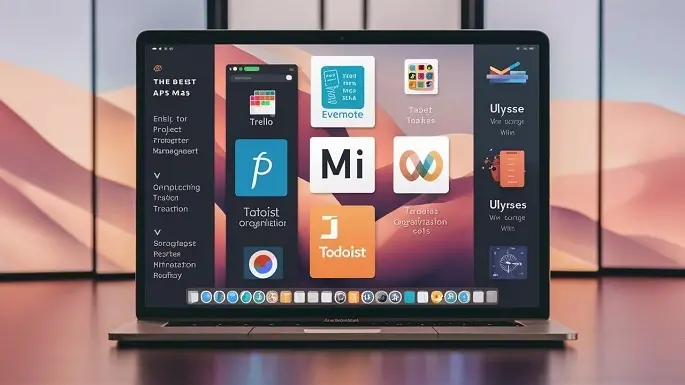In today's rapidly evolving work landscape, managing remote teams has become a crucial skill for modern leaders. The challenges and opportunities presented by remote work require a unique approach to team management. This comprehensive guide offers valuable insights, proven techniques, and practical tips to help you master the art of managing a remote team effectively. Whether you're a seasoned manager or new to remote leadership, these strategies will empower you to build a cohesive, productive, and motivated remote workforce.
What is Remote Team Management?
Remote team management is the practice of leading and coordinating a group of people who work from different locations, using technology to stay connected. It involves clear communication, setting goals, and using tools like video calls and messaging apps. Managers trust team members to complete tasks independently, and team members are responsible for their work. Building a sense of teamwork through virtual activities is important. Remote team management ensures everyone works together effectively, even when they're physically apart. It's about using modern tools to create a strong team and achieve common goals, no matter where team members are located.
What is Team Management Software?
Team management software is a specialized tool designed to help leaders and managers organize, coordinate, and oversee the activities of a team. It provides a digital platform for assigning tasks, tracking progress, and facilitating communication among team members. With features like task assignments, shared calendars, and collaboration spaces, team management software streamlines workflow, enhances productivity and promotes effective teamwork. It's a digital solution that simplifies the complexities of team coordination and ensures that everyone is on the same page, no matter where they are located.
Best Features Of Remote Team Management Software
When it comes to remote team management, the best software offers a range of features that help streamline collaboration and keep your team connected. Here's a list of key features to look for:
• Task Assignment: Easily assign tasks to team members, ensuring everyone knows their responsibilities.
• Real-Time Communication: Seamless messaging and video conferencing tools for instant interaction.
• Shared Calendars: Keep track of important dates, deadlines, and team schedules.
• Document Sharing: Centralized storage and sharing of files, fostering collaboration.
• Progress Tracking: Monitor project status and individual contributions in real-time.
• Goal Setting: Define clear objectives and key results to keep everyone aligned.
• Time Tracking: Monitor work hours and analyze productivity for accurate insights.
• Collaboration Spaces: Dedicated areas for teamwork, brainstorming, and idea sharing.
• Analytics and Reporting: Generate reports on team performance and project outcomes.
• Integration with Tools: Seamless connection with other software your team relies on.
• Remote Access: Ensure team members can work from anywhere with secure remote access.
• Security Measures: Protect sensitive data and ensure secure communication.
• Feedback and Recognition: Provide feedback and acknowledge achievements to motivate the team.
The best remote team management software combines these features to create a cohesive, efficient, and connected virtual work environment, enabling your team to thrive regardless of their physical location.
11 Key Strategies for Remote Team Management
1. Embrace Clear Communication
Effective communication forms the cornerstone of successful remote team management. By using tools like video conferencing, instant messaging, and project management software, you can ensure that every team member stays connected, informed, and engaged. Regular check-ins, team meetings, and one-on-one conversations foster a sense of belonging and transparency.
2. Set Clear Expectations
Clearly define roles, responsibilities, and performance expectations for each team member. Use performance metrics and key performance indicators (KPIs) to track progress and measure success. When team members understand their goals and responsibilities, they are more likely to stay motivated and accountable.
3. Foster a Collaborative Culture
Promote a sense of unity and collaboration among remote team members. Encourage open dialogue, idea sharing, and cross-functional teamwork. Virtual team-building activities, such as online workshops and virtual coffee breaks, can help create strong bonds and a positive team culture.
4. Leverage Technology
Invest in reliable and efficient technology tools to facilitate seamless remote work. Cloud-based project management platforms, virtual whiteboards, and collaboration software enable real-time collaboration and resource sharing. These tools enhance productivity and streamline communication.
5. Provide Flexibility
Recognize the unique circumstances of each remote team member. Offer flexible work hours and understand that work-life balance is essential for maintaining motivation and well-being. Trust your team to manage their time effectively while meeting deadlines and deliverables.
6. Offer Professional Development
Empower your remote team members to grow and develop their skills. Provide opportunities for virtual training, workshops, and skill-building sessions. Supporting their professional growth demonstrates your commitment to their success and encourages long-term loyalty.
7. Embrace Diversity and Inclusion
Remote teams often comprise members from diverse backgrounds and cultures. Embrace this diversity and foster an inclusive environment where every voice is valued and respected. By promoting diversity, you tap into a wealth of perspectives and ideas that can drive innovation and creativity.
8. Lead by Example
As a remote team leader, your actions and behaviors set the tone for the entire team. Demonstrate dedication, punctuality, and a strong work ethic. Your leadership style influences the team's attitude and work habits.
9. Provide Regular Feedback
Offer constructive feedback to remote team members on their performance and contributions. Positive reinforcement and guidance for improvement help team members stay on track and feel recognized for their efforts.
10. Address Challenges Proactively
Remote work can pose challenges such as isolation, communication gaps, and potential distractions. Anticipate these challenges and implement strategies to address them. Encourage team members to share their concerns and collaborate on solutions.
11. Cultivate Trust and Accountability
Trust is the foundation of any successful remote team. Delegate tasks and responsibilities while providing autonomy for team members to excel. When team members feel trusted, they are more likely to take ownership of their work.
FAQs about Managing a Remote Team
How do I ensure my remote team stays motivated?
Keeping your remote team motivated requires a combination of clear communication, goal alignment, and recognition of achievements. Regularly acknowledge their contributions, provide opportunities for skill growth, and create a positive work environment.
What are the best tools for remote team collaboration?
There are several effective tools for remote collaboration, including Slack, Microsoft Teams, Zoom, Asana, and Trello. Choose tools that align with your team's needs and facilitate seamless communication and project management.
How can I prevent feelings of isolation among remote team members?
Combat isolation by fostering a strong sense of connection. Schedule virtual team-building activities, encourage informal chats, and create opportunities for team members to interact outside of work-related tasks.
What strategies can I use to track remote team performance?
Utilize key performance indicators (KPIs), regular progress check-ins, and project management software to track and measure remote team performance. Set clear goals and use data-driven insights to monitor success.
How do I address conflicts within a remote team?
Address conflicts promptly and privately. Encourage open and respectful communication, and mediate discussions when necessary. Aim for a resolution that benefits both parties and maintains a positive team dynamic.
How do I promote work-life balance in a remote setting?
Promote work-life balance by setting clear boundaries and expectations for work hours. Encourage breaks and time away from screens. Lead by example and emphasize the importance of self-care.
Conclusion:
Mastering the art of managing a remote team requires a combination of effective communication, clear expectations, technology integration, and a supportive leadership approach. By embracing these strategies and adapting to the evolving remote work landscape, you can cultivate a motivated, engaged, and high-performing remote team.
Ready to Elevate Your Remote Team Management? Contact Us Today!



